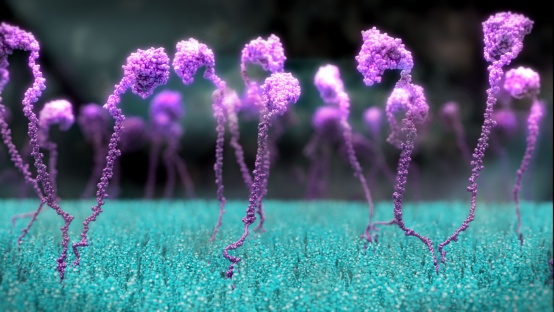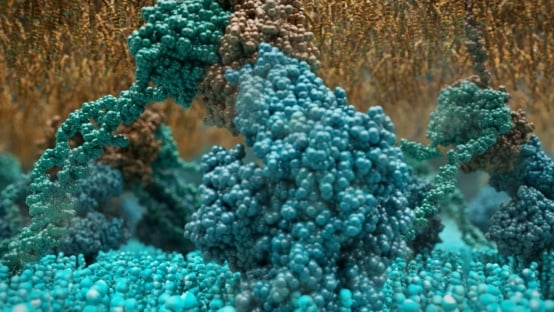News
How a WA supercomputer centre is a game changer for biomedical animation at Peter Mac
24 February 2022
Despite their geographical distance, a Perth-based supercomputer centre is revolutionising how biomedical animation is done at Melbourne's Peter Mac. Chimeric Antigen Receptors (CARs, purple) on the surface of a killer T-cell (blue). Peter Mac's award-winning biomedical animator, Dr Maja Divjak , creates 3D animations of the cellular and molecular mechanisms leading to cancer, enabling patients and their families to better understand their illness and treatment process. But creating high resolution scientific animations requires powerful graphics processing to render the millions of pixels in each frame. Previously, this was a time-consuming and labour-intensive process. Now, with the use of the Pawsey Supercomputer's new Nebula visualisation cluster based in Perth, Dr Divjak is able to render her work between two and four times faster. This has proved a boon for her latest animation, which explains how innovative cancer treatment, CAR T-cell therapy, uses specially modified T-cells to directly and precisely target cancer cells. "Access to such a high-performance computation and graphics solution has been a game changer for my work, and for that of so many researchers – it has effectively removed the bottleneck in the animation pipeline," says Dr Divjak. Jason Ellul, Head of Peter Mac's Research Computing Facility, agrees. He says the collaboration with Pawsey is "an excellent example of a how national infrastructure can be leveraged to further Maja’s outstanding work". “It’s brilliant to see that Maja's vision and hard work can now be brought to life faster than what was ever possible before,” says Mr Ellul.


Killer T-cell receptors (teal) binding to an abnormal cell (brown).
